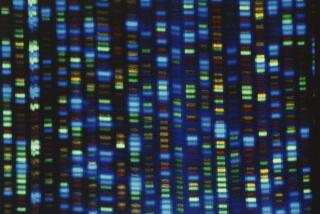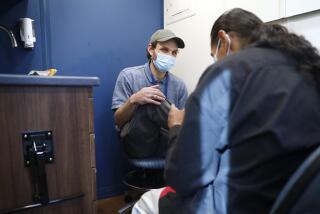Blood Banks Seek to Curb Hepatitis Through Testing
- Share via
WASHINGTON — In an attempt to increase the safety of the nation’s blood supply, thousands of blood banks will soon begin testing donors’ blood to try to prevent the most common type of hepatitis acquired through transfusions, officials said Tuesday.
The testing for evidence of highly infectious non-A, non-B hepatitis may result in the discarding of as much as 5% of the nation’s donated blood, members of the American Assn. of Blood Banks said.
Health officials estimate that as many as 200,000 of the more than 3 million blood transfusion recipients nationwide develop hepatitis, which inflames the liver. About 90% of these cases are non-A, non-B hepatitis, a strain recognized only since the early 1970s. The blood banks hope to prevent about 50,000 cases of the disease annually.
Safety Increase Essential
“The steps we are taking will exact a cost both in dollars and in loss of blood donors,” Dr. Eugene M. Berkman, president of the blood bank association, cautioned at a news conference. “However, we believe these steps are essential to increase the safety of the blood supply.”
The new tests, which the association has asked its 2,300 members to implement by Nov. 30, will add about $3 to the cost per unit of blood drawn, Berkman said. Each of the nearly 12 million units of blood annually made available through blood banks now costs $35 to $50.
But officials conceded that the tests face criticism because they cannot specifically detect non-A, non-B hepatitis. Instead, they will indicate the presence of enzymes linked to liver abnormalities as well as the antibody to the core protein of the hepatitis B virus, also frequently found in non-A, non-B infections.
‘Less Than Perfect’
Dr. Joseph Berkman, chairman of the blood banks’ committee on transfusion-transmitted diseases, acknowledged that up to 80% of positive test results could be false and called the tests “less than perfect.” Such factors as obesity, alcohol consumption, medications and strenuous exercise could affect the results, he said.
For this reason, he explained, “we have developed two cutoff levels--one level that indicates that particular unit of blood should not be used, and another, higher level to defer a donor indefinitely.” Together, he said, these categories could exclude as much as 5% of donated blood.
However, another consequence of the imprecise tests is that many infectious donors still will go undetected. “There’s still going to be 60% to 70% (of non-A, non-B cases) that we will not eliminate,” Bove said.
Not Commonly Transmitted
Of the two other known types of hepatitis, testing already exists for hepatitis B, while hepatitis A is not commonly transmitted through blood transfusions.
Berkman said only a handful of blood banks worldwide now use the new enzyme and antibody tests together, although the enzyme test has been used alone for a number of years. Besides hepatitis B screening, he added, blood donations are also tested for syphilis and exposure to the AIDS virus.
More to Read
Sign up for Essential California
The most important California stories and recommendations in your inbox every morning.
You may occasionally receive promotional content from the Los Angeles Times.










